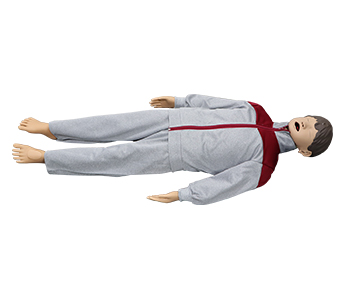■ The simulated human is made of polymer materials, which are
environmentally friendly and pollution-free; The anatomical landmarks
are obvious and can touch the nipples, ribs, sternum, and xiphoid
process, making it easy to operate and locate.
■ Simulate the
accurate anatomical position of the human head and neck, with the head
able to swing left and right and rotate horizontally 180 degrees, making
it easy to remove oral foreign objects.
■ The eyeball adopts OLED
simulation, with visible colored retina, black pupils, transparent
crystals, and the ability to reflect light at any angle; In a dead
state, the pupil dilates and the reflex to light disappears.
■ The carotid artery pulsation can be palpable, and in a state of death, the carotid artery pulsation disappears.
■ There are three feasible methods to open the airway: lifting the chin, neck, and jaw with both hands.
■
It is feasible to perform mouth to mouth artificial respiration or use a
simple respirator to assist breathing, and effective artificial
respiration can show chest undulations.

■ Electronic monitoring of multiple indicators throughout the process:
*
Pressing section: Monitor the number of presses (excessive or
insufficient), pressing position (correct or incorrect), pressing depth
(too large or too small), pressing frequency (correct or incorrect),
pressing rebound, and displaying pressing interruption time.
*
Monitoring of Blowing Part: Blowing frequency (excessive or
insufficient), tidal volume (excessive or insufficient), tidal time, and
gas intake into the stomach.
■ Real time display
of parameters such as pressing depth, pressing position, pressing
frequency, tidal volume, tidal time, airway opening, and gas intake
throughout the entire process.
■ Full course electrocardiogram display:
* Before rescue: ECG showing imminent death, disappearance of respiratory chart, and blood pressure below 60mmHg
*
During rescue: When performing compression operations, display the
compression electrocardiogram with a frequency consistent with the
compression frequency, and respiratory monitoring displays the tidal
operation graph
* After successful rescue: it shows sinus rhythm and breathing returns to normal.









